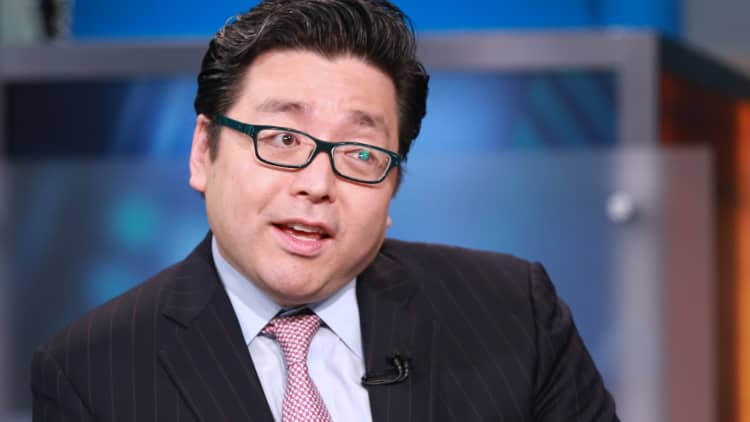
The S&P 500 has surged 8 percent from its recent low and that has one of Wall Street's biggest bulls calling for new highs as early as May.
On CNBC's "Fast Money" Monday Tom Lee reiterated his call that the S&P 500 could rise to 2,325 by the end of 2016. He also said that a recent shift in sentiment, coupled with a turning point in many of the perceived market risks, lead him to believe the large-cap index can return to its prior high of around 2,134 in the next two months. The S&P 500 is currently trading less than 10 percent below that level.
Read More Dow adds triple digits as stocks rally 1% after ISM mfg
"I think in January and February [the feeling] was universally negative, but in the last two weeks things have really changed," said the Fundstrat Global Advisors head of research. Lee pointed to the stabilization of the oil market, flattening of the , out-performance of the market and diminishing fears of a collapse in as reasons for investors to take the glass half-full approach to the market going forward.
"People forget how resilient the markets can be…but I think it's a very real possibility that the worst is behind us," he added. As of Tuesday morning, 72 percent of stocks in the S&P 500 were trading in correction territory or worse, per FactSet data. A correction is loosely defined by a stock falling 10 percent or more from its 52-week high.
Furthermore, Lee noted that a recent AAII survey shows that investors have expressed a brighter outlook in recent weeks. "Another reason the character of the market had changed is there is meaningful evidence the market has 'given up'," he said.
"Sentiment moved from extreme bearishness to less bearish while the percent of stocks trading below their 200-day moving average has recovered." Nearly 200 stocks in the S&P 500, or 36 percent, are currently trading above their respective 200-day moving average.
"All this points to the idea that you can no longer (say) we are falling into a recession," he said. Rather, he characterized the sell-off as a growth scare and said, "the markets overshot to the downside."



